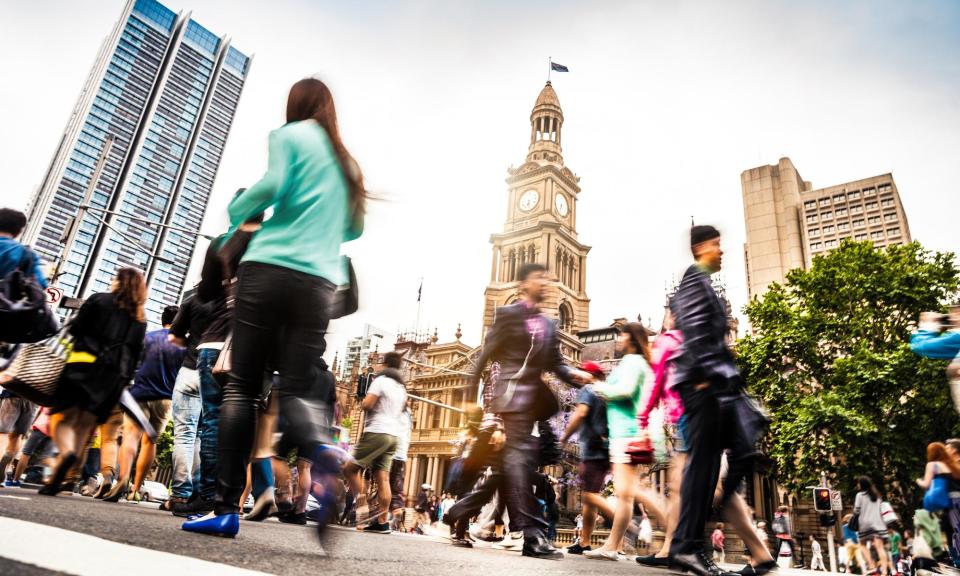Australia’s unemployment rate dips to 4% as economy adds 40,000 new jobs

Australia’s unemployment rate eased last month as employers shrugged off rising costs including higher interest bills to keep adding to their workforces.
The jobless rate was 4% in May, the Australian Bureau of Statistics said on Thursday. That was in line with economists’ predictions and was a slight drop from April’s 4.1%.
The economy added a net 39,700 jobs last month. Economists had predicted the tally of job gains to come in at about 30,000. Full-time roles, which cover 35 hours or more per week, rose by 41,700 in May. Part-time jobs fell by about 2,000, the ABS said.
“The latest jobs numbers show our labour market is an important source of strength in difficult times,” the treasurer, Jim Chalmers, said.
“Despite our economy weakening substantially as a result of higher interest rates, persistent inflation and ongoing global uncertainty, our labour market remains resilient and that’s clear from today’s result.”
Chalmers said 880,000 jobs had been added since Labor won office two years ago – the most by any first-term government.
Labour market figures are among the most closely watched by the Reserve Bank of Australia as it tries to wring inflation from the economy while maintaining as many extra jobs generated since the Covid disruptions as possible.
The RBA and Treasury expect the jobless rate to remain at 4% next month before rising to about 4.3% by June 2025.
Signs of unemployment rising too quickly would likely increase the chances of a near-term RBA interest rate cut while excessive jobs growth might prompt another cash rate rise to preclude a revival of inflation.
Belinda Allen, a senior economist at the Commonwealth Bank, estimated Australia needed to generate about 40,000 extra jobs a month to keep up with the swelling workforce.
Investor reaction to Thursday’s news was modest, with the Australian dollar hovering about the 66.5 US cent mark and stocks holding on to most of the morning’s 0.5% gains. That response indicated investors didn’t think the latest jobs figures would sway the RBA much.
The participation rate remained unchanged at 66.7%. The number of hours worked eased back 9m, or little change in a total of almost 2bn.
Bjorn Jarvis, the ABS’s head of labour statistics, said the number of those unemployed fell by 9,000 in May, reversing some of April’s 33,000 increase.
“There are now almost 600,000 unemployed people,” Jarvis said. “However, that is still nearly 110,000 fewer people than in March 2020, just before the pandemic.”
Across the states, Western Australia’s jobless rate last month was the lowest in the nation at 3.6%, improving from April’s 3.9%, seasonally adjusted.
New South Wales also posted a drop to 3.8% from April’s 4%, while Victoria went the other way, rising to 4.4% from 4.2% to be the highest in Australia.
Queensland, where state polls loom in October, had an unemployment rate of 4%, compared with 4.1% in April. The ACT was steady at 3.8%, the equal second-lowest in the land.
Labour market clearly cooling, economists say
Harry Murphy Cruise, an economist at Moody’s Analytics, said “it’s clear the labour market is cooling”.
“In trend terms, unemployment rose to 4% from 3.9% previously,” he said.
“Rather than an uptick of layoffs or redundancies, employers are instead tempering their hiring plans and shaving off the hours they offer to their employees. We see the unemployment rate hitting 4.4% by the end of the year and topping out at 4.5% by the middle of 2025.”
Krishna Bhimavarapu, an economist at State Street Global Advisor, said the labor market was cooling faster than during previous adjustments.
Related: Four charts that prove the huge financial pressure many Australian households are under
“The annual growth in full-time non-seasonally adjusted employment … is now 85.2% down from its peak in October 2022, greater than the average fall (59.5%) of the nine previous cycles,” Bhimavarapu said.
“The RBA will do well to take that into consideration during their policy discussion next week.”
The RBA board meets on 17-18 June and is widely expected to leave the cash rate on hold at 4.35% for a fifth meeting in a row.

 Yahoo Finance
Yahoo Finance 